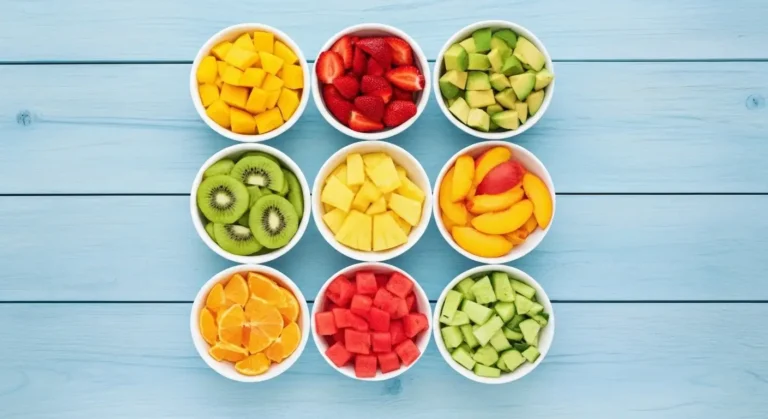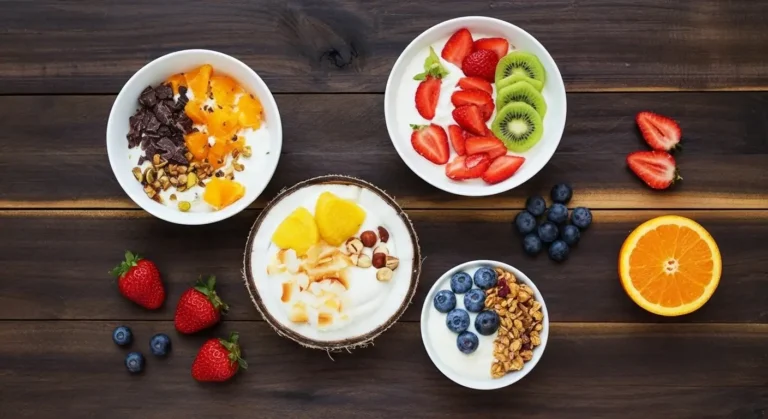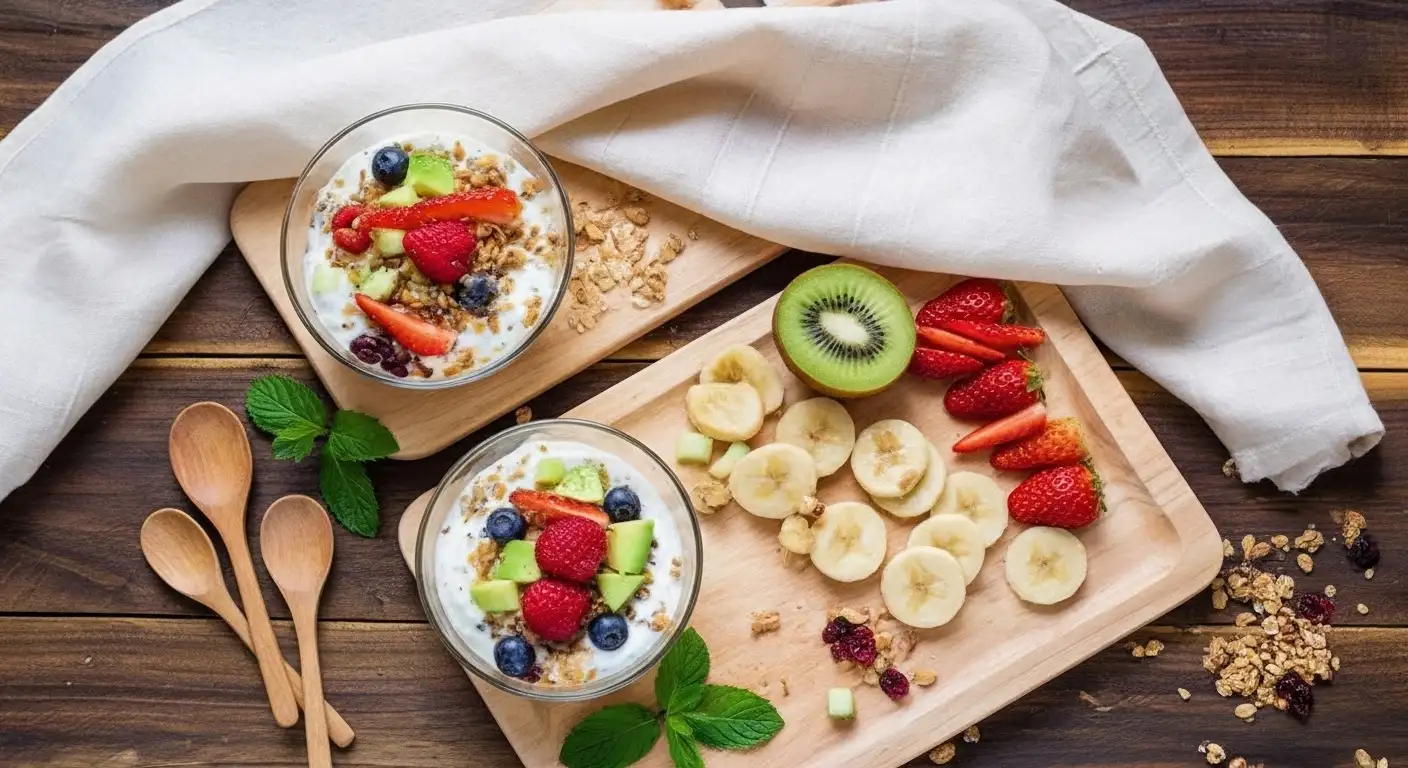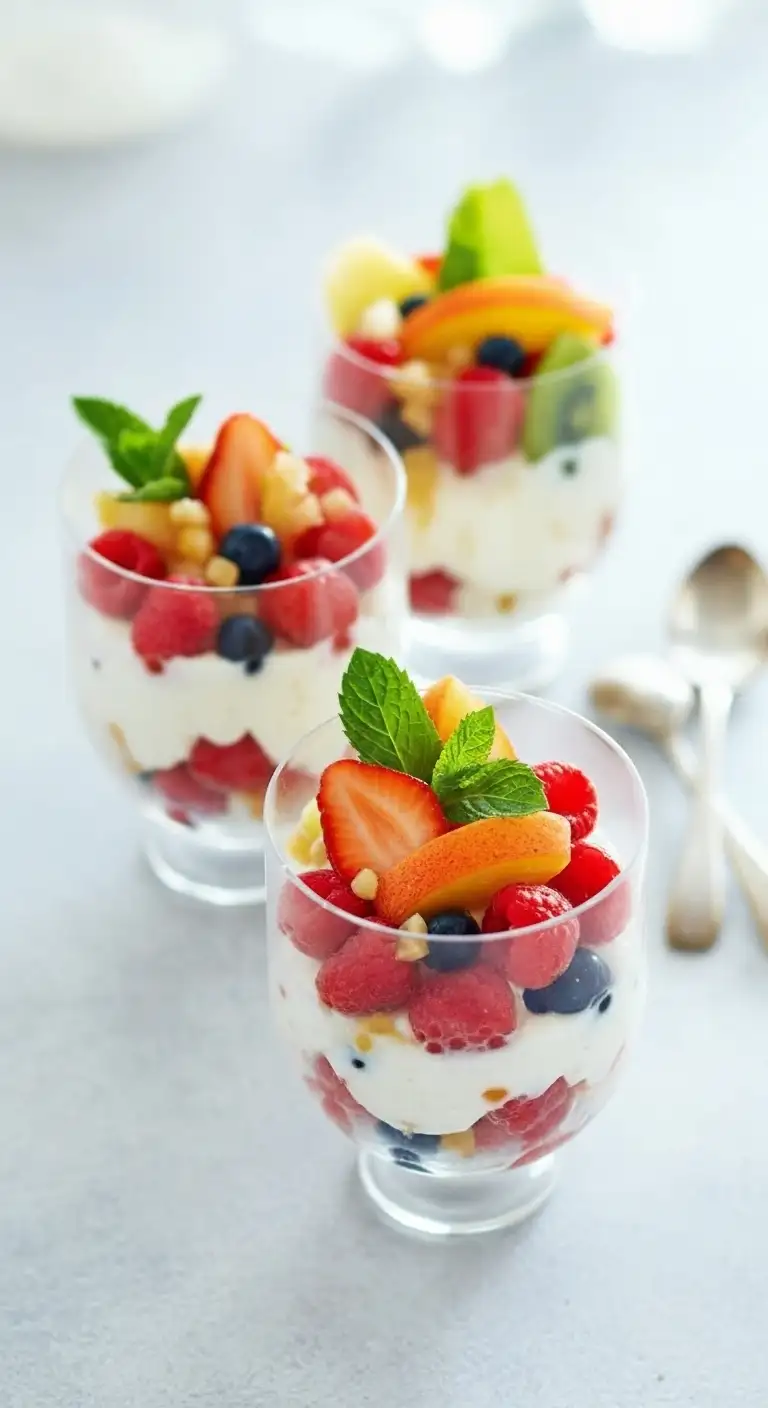Trái Cây Dầm (or Hoa Quả Dầm) is one of the most beloved and refreshing Vietnamese desserts, especially popular during the hot summer months. It is essentially a vibrant, fresh tropical fruit salad mixed with creamy, sweet dairy elements and crushed ice.
The Basics of Trái Cây Dầm
What is it?
Trái Cây Dầm (Southern dialect) or Hoa Quả Dầm (Northern dialect) translates literally to “Smashed Fruit” or “Mixed Fruit.” It is a Vietnamese-style fruit cocktail or “fruit dessert soup” where chopped fresh fruits are combined with sweetened condensed milk, fresh milk or yogurt, and crushed ice.
Key Components:
Fruits: A colorful mix of seasonal tropical fruits. Common favorites include mango, jackfruit, papaya, longan, lychee, dragon fruit, watermelon, and rambutan.
Liquid Base: This is what makes it unique—a blend of sweetened condensed milk and often fresh milk or coconut milk/cream.
The Chill: A generous mound of crushed ice is added to make it instantly cooling.
The Experience:
It’s a delightful blend of textures and temperatures: the cool, crunchy ice, the soft and juicy fresh fruit, and the thick, luscious, creamy milk sauce. It is a part drink, part dessert, and an essential street food experience.

Types and Common Variations
The “types” of Trái Cây Dầm primarily depend on the fruit selection and the creamy topping used.
Classic Trái Cây Dầm: This is the standard mix-and-match version, utilizing whatever fresh, seasonal tropical fruits are available. The sweet liquid base is usually condensed milk and fresh milk.
Trái Cây Dầm Sữa Dừa (With Coconut Milk): A richer variation where the condensed milk is combined with thick coconut milk or coconut cream, giving the dessert a more pronounced tropical richness.
Trái Cây Dầm Sữa Chua (With Yogurt): Sometimes confused with Sữa Chua Dầm Hoa Quả (Fruit Mixed with Yogurt), this version uses a swirl of Vietnamese yogurt (often slightly tart) in place of or in addition to fresh milk, adding a tangy contrast to the sweetness of the condensed milk.
Single-Fruit Focus: While Trái Cây Dầm means mixed fruit, many vendors offer single-fruit-focused variations, such as just mango (xoài dầm) or just avocado (bơ dầm), which are still categorized under the “dầm” style of preparation.
Extra Toppings: Some shops add chewy elements like small tapioca pearls (trân châu), fruit jelly, or a sprinkle of shredded coconut or peanuts for extra texture.
How to Eat Trái Cây Dầm
Trái Cây Dầm is all about mixing everything together right before you eat it to achieve the perfect blend of cold, creamy, and sweet.
Receive the Bowl: The dessert is typically served in a bowl or a tall glass, with layers of chopped fruit at the bottom, topped with the liquid base (milk/condensed milk) and a large scoop of crushed ice.
The Mix: Using a spoon, vigorously mix all the ingredients together. The goal is to slightly dầm (smash/crush) the ice and some of the softer fruits into the condensed milk to create a thick, icy, and creamy “soup.”
Taste and Adjust: Taste a spoonful. You can adjust the sweetness by adding more condensed milk (usually available on the side) or allow the ice to melt slightly to dilute the sweetness if needed.
Spoon Eating: Eat quickly with a spoon to enjoy the ideal contrast between the cold, crunchy ice shards and the creamy, fruit-infused liquid before the ice completely melts.

Regional Differences
Trái Cây Dầm is a universal favorite, but variations exist based on the abundance of local fruits. Unlike complex dishes like Phở or Bánh Mì, the core preparation method remains the same across all regions, with differences primarily in the ingredients and preferred level of sweetness.
| Region | Fruit Selection Focus | Flavor/Sweetness Preference |
|---|---|---|
| South (Saigon/Mekong Delta) | Wide Variety of Tropical Fruits: Due to the warm climate, the South has the most abundant and diverse supply of tropical fruits (durian, mangosteen, rambutan, etc.). | Sweet and Creamy: Southern cuisine generally favors sweeter profiles, so the Trái Cây Dầm here is often richer, with a more generous amount of condensed milk and heavy use of coconut milk/cream. |
| Central (Hoi An/Da Nang) | Balanced Tropical Selection: Uses local seasonal fruits. Often acts as a bridge, sharing popular fruits from both the North and South, such as papaya, mango, and dragon fruit. | Balanced Sweetness: Flavor profiles in the Central region are traditionally more complex and well-balanced, falling between the North's subtlety and the South's strong sweetness. |
| North (Hanoi) | Seasonal and Fewer Tropical Fruits: Historically, the colder climate meant fewer varieties of deep-tropical fruits were readily available. Popular choices include plum, lychee, watermelon, and papaya. | Lighter and More Subtle: Northern Vietnamese cuisine is known for its subtle and delicate flavors, so the Hoa Quả Dầm may be less intensely sweet and use less heavy coconut cream than the Southern version. |




